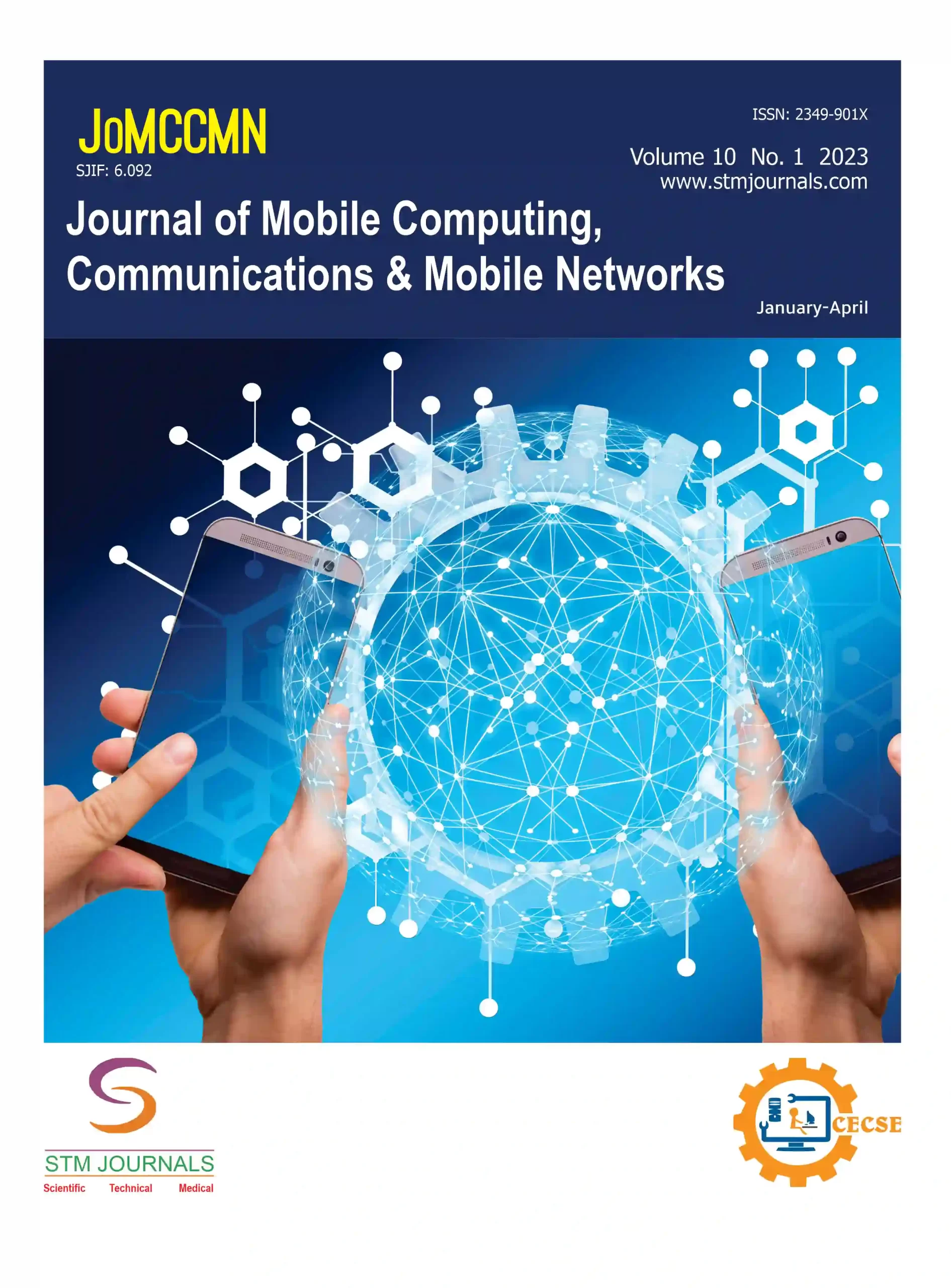Poonam,
Kirna Kumari,
- Research Scholar, Department of Department of Library and Information Science, Guru Kashi University, Talwandi Sabo, Punjab, India
- Assistant Professor, Department of Library and Information Science, Guru Kashi University, Talwandi Sabo, Punjab, India
Abstract
Mobile technology has a great impact on both individuals and organizations. Over the time, the computational capabilities of these sophisticated technologies have become more accessible and reasonably priced. These technologies have an impact on how people choose to communicate, how they use and access the internet, and how they produce and consume content or services. Furthermore, these technologies have permeated the educational field and changed the way universities and other educational institutions provide services to faculty, staff, and students. Since modern technologies are having an impact on educational institutions, academic libraries that serve these institutions have had to adopt them by making necessary adjustments and introducing new services to better serve their patrons. The current study looks into the current developments, problems and future prospects of mobile-based library services and resources. It also emphasizes on the issues like the digital gap, web-security, and technological concerns that continue to exist. The study suggests some methods to resolve these issues, such as spending grants on user training and placing strong web-security measures in place. The study concludes by outlining potential future paths for mobile technology in libraries, emphasizing the necessity of inclusive, effective, and creative information services that can adjust to the rapidly changing technological landscape and satisfy the wide range of user needs.
Keywords: Mobile library services, digital libraries, mobile applications in libraries, communication technologies, cloud computing
[This article belongs to Journal of Mobile Computing, Communications & Mobile Networks ]
Poonam, Kirna Kumari. Mobile Technology for Libraries: Trends, Challenges, and Future Prospects. Journal of Mobile Computing, Communications & Mobile Networks. 2025; 12(03):22-29.
Poonam, Kirna Kumari. Mobile Technology for Libraries: Trends, Challenges, and Future Prospects. Journal of Mobile Computing, Communications & Mobile Networks. 2025; 12(03):22-29. Available from: https://journals.stmjournals.com/jomccmn/article=2025/view=228337
References
- Yu W, Jiang Y, Fu T. Digital reading: a bibliometric and visualization analysis. Libr Hi Tech. 2025 May 19; 43(2–3): 513–41.
- Ayre LB. The impact of information technology on public libraries. Public Libr Q. 2016 Oct 1; 35(4): 355–61.
- Chang CC. Library mobile applications in university libraries. Libr Hi Tech. 2013 Sep 2; 31(3): 478–92.
- Pawlowsky S, Ryan TG. The 21st-century school library: perpetual change or evolution? Int J Educ Reform. 2016 Jan; 25(1): 38–55.
- Chahare PB. Cloud Technology for Enhanced Academic Library Services: A Comprehensive Review. InSight. 2024 Nov; 1(2): 1–5.
- Siregar AR, Dewiyana H. Mobile technology for expansion of service range Medan public library. In J Phys: Conf Ser, IOP Publishing. 2018 Mar 1; 978(1): 012052.
- Horsfall MN. Librarians as change agents for sustainable library and information service delivery in a digital society. Information Impact: J Inf Knowl Manag. 2023 Jun 21; 14(1): 113–25.
- Pedersen L. The future of public libraries: a technology perspective. Public Libr Q. 2016 Oct 1; 35(4): 362–5.
- Detlor B, Julien H, La Rose T, Serenko A. Community‐led digital literacy training: Toward a conceptual framework. J Assoc Inf Sci Technol. 2022 Oct; 73(10): 1387–400.
- Paul M, Naikar S. Innovative Uses of QR Codes in Academic Libraries: Benefits and Challenges. J Emerg Technol Innov Res. 2024 Jun 12; 11(6): 565–72.
- Axiell. (2019). Axiell wins Teltow with cloud-based, digital-first library services platform. [Online]. Axiell. Available from: https://www.axiell.com/axiell-news/axiell-wins-teltow-with-cloud-based-digital-first-library-services-platform/
- Alfonzo P. Instagram in the Library. Libr Technol Rep. 2019 Feb 26; 55(2): 33–42.
- Mosha NF. The role of artificial intelligence tools in enhancing accessibility and usability of electronic resources in academic libraries. Libr Manag. 2025 Apr 8; 46(1/2): 132–57.
- Massis B. Using virtual and augmented reality in the library. New Libr World. 2015 Nov 9; 116(11/12): 796–9.
- Ndlovu K, Scott RE, Mars M. Interoperability opportunities and challenges in linking mhealth applications and eRecord systems: Botswana as an exemplar. BMC Med Inform Decis Mak. 2021 Aug 21; 21(1): 246.
- Farid G, Warraich NF, Iftikhar S. Digital information security management policy in academic libraries: A systematic review (2010–2022). J Inf Sci. 2025 Aug; 51(4): 1000–14.
- Forsman D. Change as a service–challenges and effects of a new paradigm for library systems and content infrastructure. Libr Manag. 2012 Oct 19; 33(8/9): 498–510.
- Adepoju T, Adesina K. Awareness, perception and use of digital library services by University of Ibadan distance learning students. Nigerian School Library Journal. 2017; 16: 25–39.
- Ying ZH, Nan LI. Information Service Quality Evaluation of Mobile Libraries Under 5G Environment. J Libr Inf Sci Agric. 2022; 34(3): 4–14.
- Ikwuanusi UF, Adepoju PA, Odionu CS. AI-driven solutions for personalized knowledge dissemination and inclusive library user experiences. International Journal of Engineering Research Updates (IJERU). 2023; 4(2): 052–62.
- El Akrami N, Hanine M, Flores ES, Aray DG, Ashraf I. Unleashing the potential of blockchain and machine learning: Insights and emerging trends from bibliometric analysis. IEEE Access. 2023 Jul 24; 11: 78879–903.
- Purnomo GW, Wikandani PR, Suprapto A. Strengthening accessibility and inclusivity in libraries: The role of adaptive technology in supporting visually impaired users. J of Humanities Research Sustainability. 2024 Sep 30; 1(2): 84–106.
- Wójcik M. Wearable computing in libraries–applications that meet the needs of users and librarians. Libr Hi Tech. 2019 Oct 25; 37(4): 735–51.

Journal of Mobile Computing, Communications & Mobile Networks
| Volume | 12 |
| Issue | 03 |
| Received | 28/04/2025 |
| Accepted | 20/06/2025 |
| Published | 29/09/2025 |
| Publication Time | 154 Days |
PlumX Metrics
